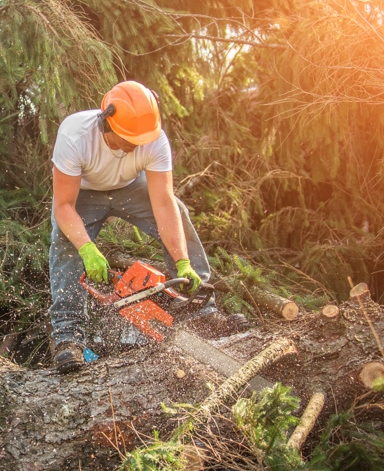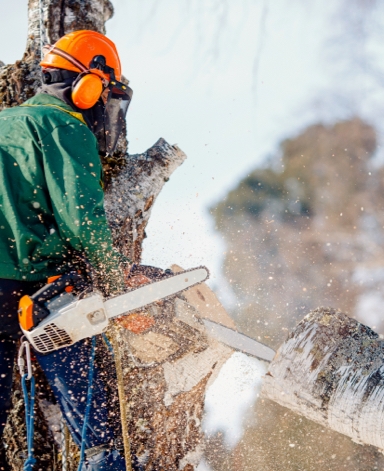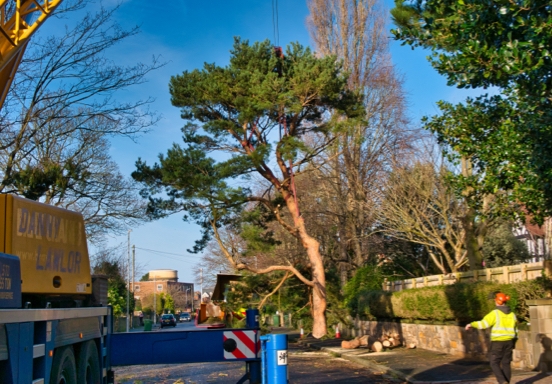What is Crown Reduction?
Crown reduction is a precise tree pruning technique designed to reduce the size of a tree’s crown—the upper section of the tree comprising leaves, branches, and twigs. This practice is commonly employed to manage trees that have outgrown their environment or pose potential risks to nearby structures and people.
While the terms crown reduction and crown lifting are sometimes used interchangeably, they address different aspects of tree care. Crown lifting involves the removal of the lowest hanging branches to provide clearance, while crown reduction focuses on the overall reduction in size of the tree's canopy.
Benefits of Crown Reduction
- Improved Aesthetic Appeal - Crown reduction can help to improve the aesthetic appeal of a tree. Trees that have outgrown their allotted space can look untidy and unbalanced, detracting from the overall appearance of a property. By reducing the size of the crown, the tree can look more visually appealing and balanced.
- Reduced Risk of Tree Failure - Trees that have grown too large can be at risk of failure, especially during high winds or storms. Crown reduction can help to reduce the weight of the tree and reduce the risk of branch failure.
- Improved Tree Health - Crown reduction can help to improve the overall health of a tree. By reducing the size of the crown, the tree can allocate more resources to its remaining branches, which can lead to improved growth and vitality.
- Increased Safety - Crown reduction can help to increase safety by removing branches that are close to power lines or buildings. This can help to prevent damage to property and reduce the risk of injury to people.
The Process of Performing Crown Reduction
- Assessment -The first step in performing crown reduction is to assess the tree and determine the appropriate amount of reduction. This will depend on the size and species of the tree, as well as the reason for the reduction.
- Preparation - The next step is to prepare the area around the tree. This may involve the use of safety equipment such as harnesses, ropes, and ladders to ensure the safety of the workers and anyone in the vicinity.
- Reduction - Once the area has been prepared, the reduction process can begin. This involves the careful removal of the uppermost branches of the tree to reduce its overall size. The removal process will depend on the size and location of the branches and may involve the use of a chainsaw, pruning shears, or other cutting tools.
- Clean-up - After the reduction process is complete, the area around the tree will be cleaned up. This may involve the removal of any debris or waste, as well as the use of a blower or rake to ensure that the area is tidy.
What to Look for in a Crown Reduction Service Provider
- Experience - Look for a service provider that has experience in crown reduction services. This will ensure that they have the knowledge and expertise to perform the work safely and effectively.
- Professionalism - Look for a service provider that is professional in their approach to the work. This includes being reliable, punctual, and respectful of the property and its occupants.
- Safety Procedures - Look for a service provider that has strict safety procedures in place. This includes the use of safety equipment such as harnesses, ropes, and ladders to ensure the safety of the workers and anyone in the vicinity.
- References - Look for a service provider that has positive references from past clients. This will provide an indication of their quality of work and level of customer satisfaction.


CONTACT US FOR EXPERT CROWN REDUCTION SERVICES
Get in Touch CROWN REDUCTION SERVICES
FAQS
How to do a crown reduction on a tree?
Crown reduction is a tree pruning technique to reduce the size of a tree's crown. To do a crown reduction, hire a professional arborist to assess the tree, determine the right size and shape for the crown, and prune the branches in a controlled and gradual manner.
The pruning cuts should be made in the right place, taking into account the angle and location of the branch and the tree's growth habit. It's important to avoid over-pruning, as this can harm the tree's health. Crown reduction is best performed during the dormant season when the tree is not actively growing.
When should a crown be reduced?
A crown should be reduced when it has outgrown its allotted space or poses a risk to surrounding structures. Crown reduction is often performed on mature trees and should be done in a controlled and gradual manner to preserve the tree's health and structure.
The best time to perform a crown reduction is during the dormant season when the tree is not actively growing. It is important to hire a professional arborist to assess the tree and determine the appropriate size and shape for the crown. Over-pruning should be avoided, as it can harm the tree's health.
What is 15% crown reduction?
15% crown reduction refers to a tree pruning technique where 15% of the tree's crown is removed in order to reduce its size. This process involves the removal of the tree's terminal shoots, or the tips of its branches, to decrease the overall size of the crown.
